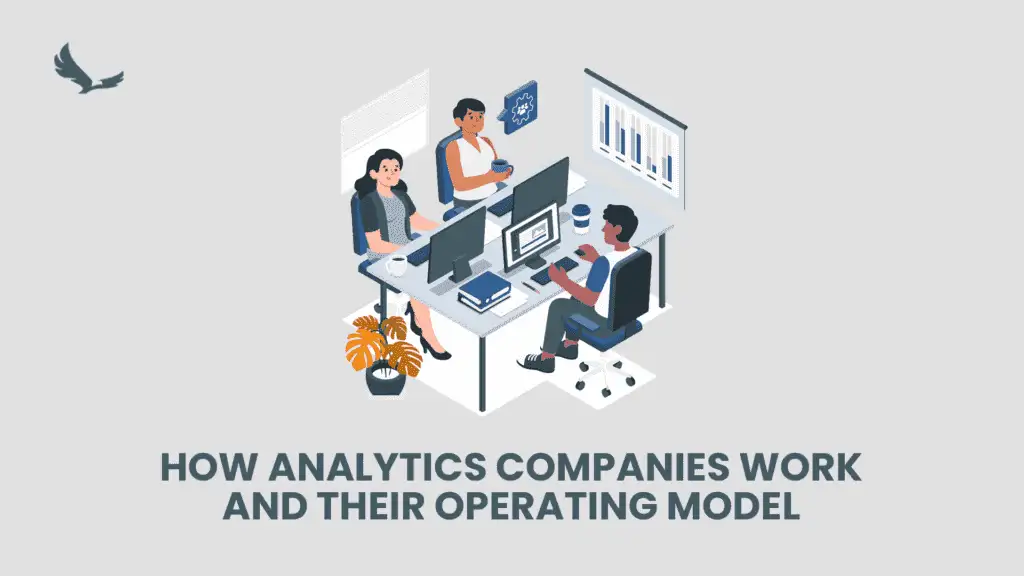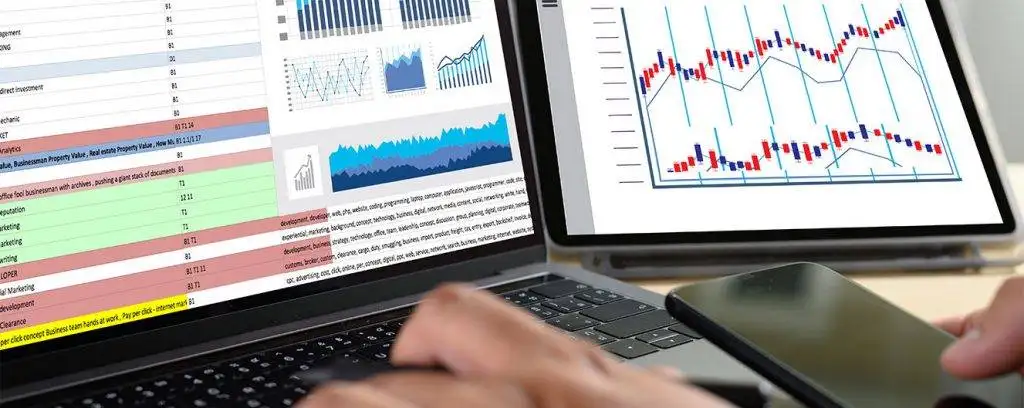In this fast-paced business world, companies require tech-savvy organizational solutions that improve efficiency. To enhance operational capacities, organizations look for automated business analytics that drives them toward success. Thanks to ML and AI, the field of data analytics has been rapidly evolving from merely data collection and presentation to intelligent data readings that forecast outcomes and supports present-day decision-making.
What do Analytic Companies Do?
There are multiple functions that an analytic company does, starting from understanding consumer needs, research, data collection, analysis, and turning it into meaningful information. Here, we will discuss the functions in detail:
Determine the issue and raise the appropriate inquiries
Ensuring the data is helpful in an organization requires asking the correct questions. Data experts will consider the questions they must address to fulfill the company’s purpose once the organization’s primary goals have been described and the challenges have been precisely defined and identified.
As it establishes the very framework of the procedure, this is one of the most crucial processes in data analysis. Analytics’ primary objective is to identify the questions we seek to answer with the data, evaluate the pertinent data, and identify any prospective insights as we review and organize the data.
Establish the methodology and the priorities for the research
Data professionals will next define the methodology and research priorities, or what to measure and how to measure it. This phase gives additional direction on the data types required to handle the specified problem and respond to all pertinent queries established in step one.
Once the technique has a clear direction and which questions need responses, the most valuable and relevant data sources are located, and insights may be gathered.
Prepare Data
Enterprise Data Warehousing (EDW) is essential for data preparation and validation before advanced analytics begins. EDW is a fundamental component of analytics. The data will be loaded, prepared, and verified by data professionals, who will then start doing reporting and analytics. Before reporting and analytics, there are three key processes in the data lifecycle of an EDW that deal with data preparation and verification:
- Data importing. Bulk export procedures like CSV-based exports or API-based methodologies load data from source systems into the warehouse. Each source system inside the EDW receives its database or data set during this phase, which is conceptually distinct from other sources and methods.
- Preparing data. Three steps are commonly included in the data preparation phase: data transformation, data consolidation, and model application. At this point, data combines from numerous databases into one; the established company logic modifies initial data, and the information that comes in then goes into the data warehouse, where it will eventually end up in the data model.
- Verification of data. The ultimate objective of the effort is to confirm that the data is reliable and consistent with previous trends for every data field, even though techniques for data verification frequently differ significantly between institutions.
Analyze Data
With analytics, we advance beyond information to optimization by helping the organization find answers to questions about its data. There are four main groups of questions in this stage are as follows:
- Descriptive analytics – aims to answer the question “What happened?” by studying and interpreting past data to explain what transpired in the business.
- Diagnostic Analytics: To answer the question “Why did it happen?” this phase entails examining the relationships between historical data and primary data and metrics to explain the causes of the behavior seen in Descriptive Analytics.
- Predictive analytics, where the goal is to predict future events based on knowledge and context gained from the past. This type of analysis focuses on predicting “what will happen?” The volume of data impacts the depth and precision of algorithms and result forecasts while using many different models and algorithmic approaches.
- Prescriptive analytics — focuses on “how can we make it happen?” and determines the optimal course of action and valuable insights using descriptive and prescriptive analytics.
Interpret Results
Interpreting the findings comes after data analysis and, if necessary, additional investigation. Data professionals never aim to demonstrate the integrity of a particular research hypothesis but rather to verify that the study failed to disprove it.
While interpreting the outcomes, data experts would frequently pose the following or comparable queries:
- Does the information address the issue? Does it emphasize prospective or current business opportunities? Where and how?
- Does the evidence support a defense against any criticisms? How?
It is reasonable to infer that the analysis has revealed significant prospects on which the firm can act if, in the end, the results’ interpretation stands up under the queries above and considerations.
It is crucial to remember that we might not arrive at this step of the analysis until after several repetitions. Make sure to reiterate before we can answer the questions raised. Only after that can we move on to using the conclusions to improve a firm’s internal and external business processes.
Data analytics firms know the need for a reliable data analysis procedure. Organizations may operate more profitably, offer better products and services, and communicate with customers using the correct data to inform their decisions.
Different Types of Operating Models for Analytics Companies
Analytics companies provide their customers with data-driven insights and solutions. They employ various technologies, methods, and tools to gather, process, analyze, and visualize data from multiple sources. The method they organize, administer, and provide their services is known as their operating model. Depending on their size, scope, aims, and clientele, analytics organizations might use a variety of operational models. Common examples include:
Teams in technology: These IT stakeholders offer the platforms, infrastructure, and tools needed to analyze data. Data governance, security, quality, and integration fall under their purview. They might also create various analytics programs or services internally or externally.
Hybrid teams: Domain-based development teams, known as hybrid teams, mix business and IT expertise. They focus on particular analytics tasks or areas that demand strong coordination between data specialists and business users. They may additionally use other vendors or partners for various elements of their work.
Business teams are the stakeholders and business areas that use or consume analytics outputs or insights. They employ them in decision-making, process optimization, performance improvement, and value creation. They might also possess analytics tools or capabilities, including self-service dashboards or reports.
The Chief Data Officer’s (CDO) responsibility is to direct and oversee all organization-wide data and analytics initiatives. The CDO establishes the vision, strategy, and policies for analytics and data, harmonizes them with the corporate goals and priorities, and ensures good governance, teamwork, and communication across the various teams.
The Bottom Line
In a world where obtaining information and compiling statistics is becoming increasingly important, data analytics aids both individuals and companies in ensuring the accuracy of their data. A set of raw facts can transform into instructive, educative insights that guide decision-making and considerate management.




